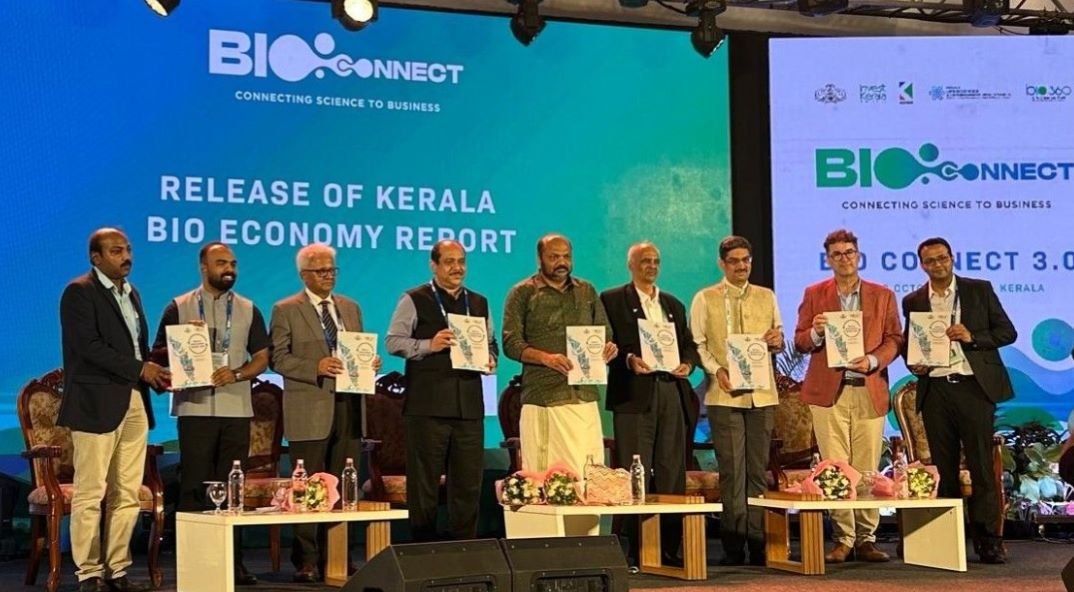Roadmap for equitable growth of Indian biotech
June 19, 2013 | Wednesday | Views | By BioSpectrum Bureau
Roadmap for equitable growth of Indian biotech

India is amongst the top 12 biotech destinations in the world and ranks second in Asia, after China. It is also the leading producer and supplier of vaccines to the world. The Indian biotechnology segment grows at approximately 15 percent per year. Some of the estimates suggest that it is poised to increase to $10 billion by 2015. Rising investments from foreign companies, increase in R&D and infrastructure investments from the private and public sectors, emerging market for contract research, increasing clinical capabilities in drug discovery and rising opportunities to outsource manufacturing functions to the country are the key factors driving this market growth. Out of the different biotechnology sectors, pharmaceutical biotechnology accounts for 60 percent of the total revenues. This is followed by biotechnology services at 20 percent, agricultural biotechnology at 14 percent, industrial biotechnology at 4 percent, and bioinformatics at 2 percent.
If we look at the growth of biotech industry in India in retrospect, we can clearly see that it started in South India, particularly in two megacities, Bangalore and Hyderabad. The reason for maximum growth of biotech industry in South India has been the focused attention by the government on high quality teaching and research in life sciences at some of the institutions of excellence in Bangalore and Hyderabad. These institutions also had the progressive vision to closely interact with industry to develop technologies to the extent that they become commercially viable. The concerned state governments have also played a positive role in framing policies to support the growth of these industries besides ensuring basic infrastructural necessities of the industry such as land, road, electric and water supply. The excellence in life sciences research led to greater strides in several areas of bio sciences, but the main impact was felt in vaccine research where India is a world leader.
In addition to consolidating our strength developed in and around some cities such as Bangalore and Hyderabad, we need to expand such capabilities in the rest of India. This will depend on the ability of the government to liberally fund and carefully nurture some of the promising institutions in other parts of the country to facilitate their transformation into the world class institutions of excellence in teaching and research so as to become prominent centers which can cater to the needs of biotech industry and catalyze its growth like the pattern of Bangalore and Hyderabad. The initial input from the government in the development of the institutions in life sciences will enable proper utilization of the capabilities of human capital from rest of the India towards a much faster and more equitable growth of the biotech industry in our country. Although several state governments have taken initiatives to establish biotech parks and clusters, they have had limited success and impact due to poor availability of trained manpower in that region and lack of willingness of well trained graduates and experts to work in other parts of the country.
Biotech industry grows not only from in-depth research in specified area, but mainly from the closer interaction of scientists from different fields. Right from 1970s, when biotechnology was borne by the fusion of ideas of Dr Stanley Cohen, a plasmid biologist and Dr Herb Boyer, a pioneer expert to produce restriction enzymes, innovations in biotechnology have happened mainly from interdisciplinary interactions.
Universities which offer courses in different areas of science, technology, human health and agriculture provide a fertile ground for breeding the graduates to meet the need of different sectors of biotech industry. In order to improve the commercial output of the biotech industry, which demands well trained human resource as a critical input, the biotech industry needs to closely interact with the academic institutions to enable them to revise their curricula to suit the needs of the industry. Now there is a need of an investment by the government and by the industry in creating chairs to appoint faculty who can cater to the industry specific needs of skill development and can develop a synergy between biotech industry and the government through such institutions to produce graduates with employable skills. Availability of highly skilled graduates with biotech industry orientation will attract establishment of biotech companies around these hubs of quality biotech education in the rest of India.
At present the demand of biotech graduates at the entry level in the biotechnology industry is not very encouraging because of the inadequately trained degree holders in biotechnology, and relatively poor experimental skills of these graduates who are passing out from a large number of ill-equipped institutions offering biotechnology degrees without having properly trained faculty in biotechnological skills.
Keeping in view the upswing in the pharmaceutical sector, many pharmaceutical companies from abroad have established their R&D centers in India for tapping India's talent. But the qualitative change required to provide a further boost in this sector has not happened. Although Ministry of Human Resource Development (MHRD) has launched several National Institute of Pharmaceutical Education and Research (NIPERs), which offer some flavor of biotechnology, and there are many universities which offer MSc biotechnology programs without adequate emphasis on pharmaceutical aspects, fusion of such institutions to complement each others' deficiencies to orient their skills towards pharmaceutical biotechnology will accelerate the development in this sector.
Indian bioinformatics sector has also shown a growth trajectory of 10 percent. By tapping the mathematical skills, and capabilities of IT and bioinformatics in our country it should be possible to develop India as pharmacogenomics hub where genome sequencing capabilities can be developed at par with China. This can make India a BPO destination to outsource solutions related to diagnostics and personalized medicine, provided well focused plans to develop relevant skills in universities are implemented without wasting time.
The biotechnology sector is expected to offer huge investment opportunities in the coming 5 to 10 years in the areas of vaccines, bioactive therapeutic proteins, contract research, clinical trials, bioinformatics, medicinal plants, animal biotechnology, seri biotechnology, stem cell biotechnology, biofuels, biopesticides, bioinformatics, human genetics and environmental biotechnology. Investing in the improvement of teaching and research in the promising institutions in other parts of India will register a much impressive and equitable growth story of biotechnology industry in India.
There is a necessity for our biotech industries to develop closer linkages with Indian universities and scientific institutions to work out traditional medicines as ayurveda, tribal medicine and other systems for their international acceptance. Our traditional knowledge of ayurveda in particular has served humanity for thousands of years. We must not ignore it, as it has the potential to provide medicine at affordable cost to everyone and serve the entire humanity. Very close linkages of our industries, universities and other academic institutions on the pattern of Germany is going to be very crucial for our success. Biotech industries may consider providing fellowships for PhD program and post doctoral program to bright students to work on their problems in universities under the able guidance of competent and talented young faculty members whose approach has the potential of keeping India ahead of other countries. There is a necessity for all of us to work together towards this goal.









